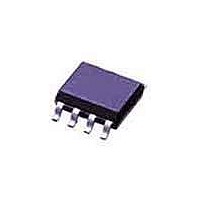TISP6NTP2CD-S Bourns Inc., TISP6NTP2CD-S Datasheet - Page 5

TISP6NTP2CD-S
Manufacturer Part Number
TISP6NTP2CD-S
Description
Sidacs Quad Buffered PGate Forward Conducting
Manufacturer
Bourns Inc.
Datasheet
1.TISP6NTP2CDR-S.pdf
(9 pages)
Specifications of TISP6NTP2CD-S
Breakover Current Ibo Max
7 A
Rated Repetitive Off-state Voltage Vdrm
170 V
Off-state Leakage Current @ Vdrm Idrm
0.005 mA
Mounting Style
SMD/SMT
Package / Case
SO-8
Lead Free Status / RoHS Status
Lead free / RoHS Compliant
TISP6NTP2A Programmable Protector
APPLICATIONS INFORMATION
Operation of Gated Protectors
Figure 2 and Figure 3 show how the TISP6NTP2A limits overvoltages. The TISP6NTP2A thyristor sections limit negative overvoltages and the
diode sections limit positive overvoltages.
AI6XBN
AI6XBO
Figure 2. Negative Overvoltage Condition
Figure 3. Positive Overvoltage Condition
Negative overvoltages (Figure 2) are initially clipped close to the SLIC negative supply rail value (V BAT ) by the conduction of the transistor
base-emitter and the thyristor gate-cathode junctions. If sufficient current is available from the overvoltage, then the thyristor will crowbar into
a low voltage ground referenced on-state condition. As the overvoltage subsides, the high holding current of the crowbar thyristor prevents
d.c. latchup. The common gate of each thyristor pair is connected the appropriate SLIC battery feed voltage (V BAT1 or V BAT2 ).
The negative protection voltage, V (BO) , will be the sum of the gate supply (V BAT ) and the peak gate (terminal)-cathode voltage (V GT ). Under
a.c. overvoltage conditions V GT will be less than 2.5 V. The integrated transistor buffer in the TISP6NTP2A greatly reduces protectors source
and sink current loading on the V BAT supply. Without the transistor, the thyristor gate current would charge the V BAT supply. An electronic
power supply is not usually designed to be charged like a battery. As a result, the electronic supply would switch off and the thyristor gate
current would provide the SLIC supply current. Normally the SLIC current would be less than the gate current, which would cause the supply
voltage to increase and destroy the SLIC by a supply overvoltage. The integrated transistor buffer removes this problem.
Fast rising impulses will cause short term overshoots in gate-cathode voltage. The negative protection voltage under impulse conditions will
also be increased if there is a long connection between the gate decoupling capacitor and the gate terminal. During the initial rise of a fast
impulse, the gate current (I G ) is the same as the cathode current (I K ). Rates of 60 A/µs can cause inductive voltages of 0.6 V in 2.5 cm of
printed wiring track. To minimize this inductive voltage increase of protection voltage, the length of the capacitor to gate terminal tracking
should be minimized.
.
JUNE 1998 - REVISED OCTOBER 2000
Specifications are subject to change without notice.
224









